Ethiopia, located in the Horn of Africa, has a history that stretches back thousands of years. Known for its ancient culture, diverse landscapes, and resilient people, Ethiopia stands at a crossroad, grappling with modern challenges while holding onto traditional values.
As the nation endeavors to elevate the living standards of its citizens, several key areas emerge as critical to its development. Addressing these needs can pave the way for a brighter, more prosperous future for Ethiopia.
- Current State of Ethiopia
- Educational Needs
- Healthcare Improvements
- Infrastructure Development
- Economic Diversification
- International Support and Aid
Current State of Ethiopia
Ethiopia, a nation with a history as old as humanity itself, is a land of contrasts. From the towering mountains in the north to the arid lowlands in the east, the country's diverse geography mirrors its complex and multifaceted socio-economic landscape. Over the past decade, Ethiopia has shown remarkable resilience and has made significant strides in economic growth, with an average annual GDP growth rate of about 8–10%. This impressive statistic places Ethiopia among the fastest-growing economies in the world, a feat even more remarkable given its landlocked status and regional challenges.
However, economic growth has not equated to uniform development across the board. The country's rapid urbanization has left many rural areas lagging behind. About 80% of the population still relies on agriculture for their livelihood, a sector vulnerable to climate change, droughts, and political instability. For instance, despite being the source of the Blue Nile, which supplies much of the Nile River’s waters, Ethiopia experiences frequent water shortages impacting both agriculture and daily life.
In terms of social indicators, Ethiopia has made significant progress but still faces substantial challenges. The literacy rate has improved, particularly among the younger generation, largely due to aggressive educational campaigns and the construction of new schools. However, adult literacy remains an issue with only about 52% of adults being literate as per the latest UNESCO data. Additionally, the healthcare sector, while improving, has a long way to go. The country still battles infectious diseases like malaria and tuberculosis, compounded by emerging challenges such as non-communicable diseases.
Political dynamics also play a crucial role in Ethiopia's current state. The country has recently gone through a significant political transition, shifting from long-standing authoritarian rule to a more open but potentially volatile federal system. Prime Minister Abiy Ahmed, who took office in 2018, has initiated various reforms to improve freedoms and foster economic growth. However, ethnic tensions and regional conflicts pose significant threats to national stability. The conflict in the Tigray region, starting in late 2020, highlighted these challenges, drawing international attention and humanitarian concern.
The infrastructural landscape of Ethiopia presents a mixed scenario. While cities like Addis Ababa showcase new high-rises, modern airports, and light rail systems, vast rural areas still lack essential infrastructure like roads, electricity, and clean water. The aim to turn Ethiopia into a middle-income country by 2025 hinges significantly on closing this infrastructure gap. According to the African Development Bank, infrastructure deficiencies cost the country around 2–3% of GDP growth annually, a stark reminder of the work that remains.
Demographically, Ethiopia is a young country, with around 70% of its population under the age of 30. This youthful demographic is a double-edged sword. On one side, it represents a potential labor force that can be harnessed for economic growth. On the other, high unemployment rates among the youth could lead to social unrest and economic strain. Addressing the issues of education, jobs, and engagement is crucial for harnessing this demographic dividend.
The international community recognizes Ethiopia's vital role in the Horn of Africa, not just in terms of economic potential but also in terms of regional stability. As such, Ethiopia receives considerable foreign aid and investment, aimed at bolstering various sectors, including infrastructure, healthcare, and education. The synergy between international support and domestic policies will be crucial in shaping Ethiopia’s path forward.
Educational Needs
Education is often seen as the bedrock of a nation's future, and Ethiopia is no exception. Despite progress in recent years, various challenges persist that hinder the full realization of quality education for all. One of the main issues is the significant disparity in access to education between urban and rural areas. In cities like Addis Ababa, students have relatively better school facilities and educational resources, while in rural areas, schools can be underfunded and lack basic amenities. This divide means that many children in the countryside are left behind, depriving them of opportunities for higher learning and better jobs in the future.
Another area of concern is the shortage of trained and qualified teachers. Ethiopia has a young and growing population, and the demand for quality teachers is rapidly outstripping the supply. Efforts have been made to bolster the number of teachers, but the quality sometimes suffers, leading to subpar educational outcomes. To remedy this, the government and various NGOs have been working tirelessly to provide teachers with better training and more resources to improve their effectiveness in the classroom. This is crucial because the-level of teacher expertise directly impacts student performance and future prospects.
The curriculum used in schools is another key focus area for educational development. Traditionally, Ethiopian schools have followed a rote learning approach, emphasizing memorization over critical thinking and problem-solving skills. There is a growing push to reform the curriculum to incorporate more creative and analytical thinking. Such changes can help students not just to pass exams, but also to apply their learning in real-world scenarios. This shift is vital in preparing a workforce that can adapt to the rapidly changing demands of the global economy.
Infrastructure also plays a crucial role in enhancing the quality of education. Many schools lack basic necessities such as adequate classrooms, desks, and learning materials. This problem is particularly severe in rural areas where schools are sometimes nothing more than makeshift structures. Improving school infrastructure ensures that students have a conducive learning environment, which is essential for their academic success and overall well-being. Efforts are underway by both governmental bodies and international organizations to build and renovate schools, providing them with the necessary facilities to support effective learning.
The issue of educational disparity also extends to gender. Girls in Ethiopia often face more obstacles to education compared to boys, due to cultural norms, early marriage, and domestic responsibilities. Programs aimed at promoting gender equality in education have shown promise, but there is still much work to be done. For instance, organizations such as UNICEF and local NGOs are actively working to enhance the participation of girls in schools through scholarships, awareness campaigns, and community engagement initiatives. Ensuring that girls have equal access to education is not just a matter of fairness, but also a critical component of national development.
"Education is the most powerful weapon which you can use to change the world." — Nelson MandelaTechnology is another transformative tool that can revolutionize education in Ethiopia. With the proliferation of mobile phones and internet access even in remote areas, digital learning platforms have the potential to bridge some of the educational gaps. E-learning solutions offer a way to reach students who might otherwise miss out on formal education. However, the implementation of such systems requires not only investment in technology but also training for teachers and students to use these new tools effectively.
Finally, community involvement is crucial for the success of educational initiatives. When parents, local leaders, and community members take an active role in supporting their schools, the outcomes improve significantly. Community-based programs that encourage parental involvement and local oversight of schools can lead to better attendance rates, improved academic performance, and a more supportive learning environment for students. Engaging the community helps ensure that educational reforms are sustainable and tailored to the unique needs of each locality.
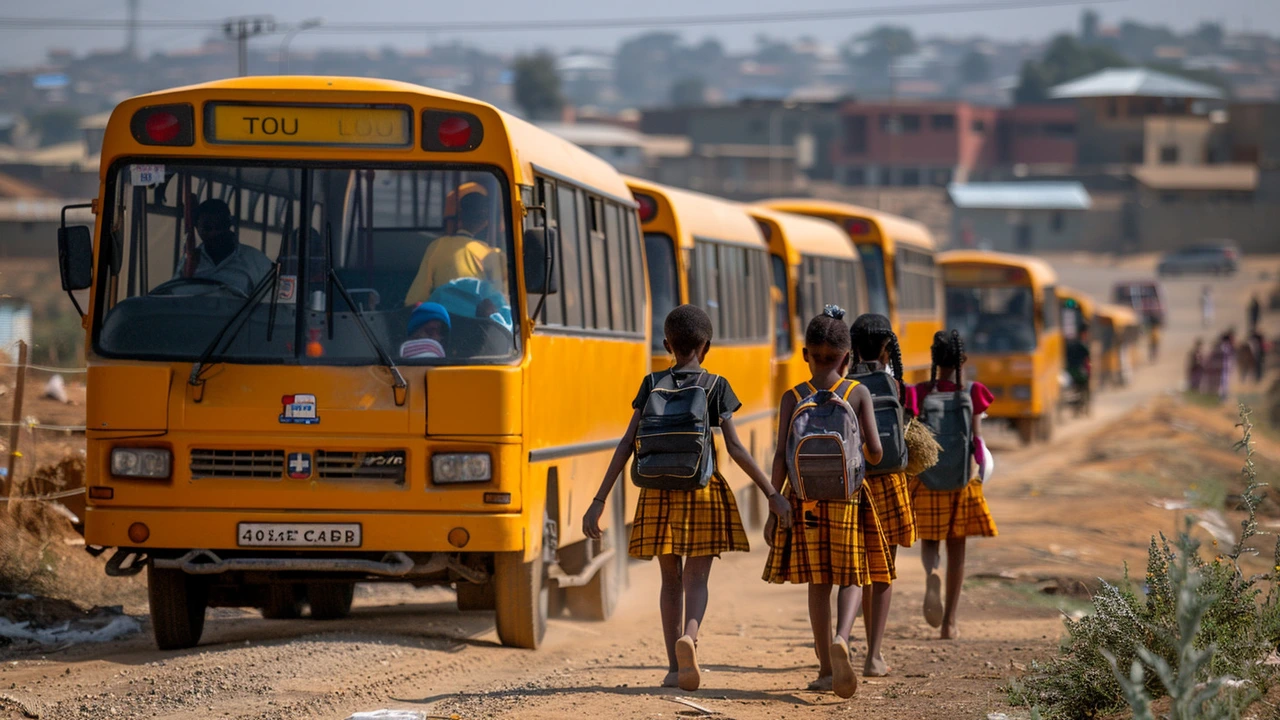
Healthcare Improvements
When discussing Ethiopia's path to a healthier society, one cannot overlook the pressing need for enhanced healthcare systems. The country's healthcare infrastructure is currently underdeveloped, which poses a significant challenge to improving public health. Limited access to medical facilities, a shortage of healthcare professionals, and inadequate funding are some of the critical issues that need to be addressed. These problems are even more pronounced in rural areas, where residents often travel long distances to reach the nearest clinic.
Many health centers lack essential equipment and medications, making the treatment of even common illnesses a struggle. This situation is exacerbated by an alarming doctor-patient ratio. According to data from the World Health Organization, there is less than one doctor per 10,000 people in Ethiopia, a stark contrast to the global median of 1.5 doctors per 1,000 people. This shortage means that even with the best intentions, healthcare workers are overwhelmed and unable to provide adequate care.
Communicable diseases like malaria, tuberculosis, and HIV/AIDS continue to be a major concern, impacting millions across the country. Malnutrition and poor maternal health further complicate the healthcare landscape. According to UNICEF, Ethiopia has one of the highest rates of maternal mortality in the world, emphasizing the urgent need for better maternal health services. Efforts to combat these issues are ongoing, but much more remains to be done.
Improving healthcare in Ethiopia will require a multifaceted approach. Building more hospitals and clinics, especially in underserved rural areas, is crucial. Additionally, there’s a dire need for programs that train and retain healthcare professionals. Investments in medical education and attractive incentives could help mitigate the severe shortage of doctors and nurses. Use of telemedicine and mobile healthcare units can also bridge the gap in remote locations. For example, telemedicine can connect patients in isolated areas with specialists in urban centers, providing them with timely consultations and monitoring.
Public health campaigns focusing on preventive measures are equally important. Educating the population about hygiene, vaccination, and disease prevention can lead to significant improvements in community health. On a positive note, there have been some inspiring successes. The widespread distribution of insecticide-treated nets has significantly reduced malaria cases. Similarly, immunization programs have led to dramatic drops in diseases like measles and polio.
According to Dr. Lia Tadesse, Ethiopia’s Minister of Health, "Improving healthcare access in rural areas remains a top priority. By investing in healthcare infrastructure and workforce development, we aim to make quality healthcare accessible to all Ethiopians."
Securing adequate funding for healthcare is another critical factor. International aid plays a significant role, but sustainable progress depends on long-term investments by the Ethiopian government. Budget allocation for healthcare needs to increase to ensure that resources are available for both immediate medical needs and long-term health initiatives. Partnerships with global health organizations can also bring in much-needed expertise and funding.
Engaging the private sector can also offer innovative solutions to healthcare challenges. Private investments in healthcare facilities, pharmaceutical manufacturing, and healthcare technologies can complement government efforts. Moreover, public-private partnerships can lead to significant strides in healthcare delivery, making essential services more accessible to Ethiopians.
Infrastructure Development
Infrastructure in Ethiopia plays a pivotal role in the nation's economic progression. Road networks, railways, and telecommunication systems are the backbone that support all aspects of daily life and commerce. However, despite significant investments, there remains much to be done to bring these systems to a level that can fully support rapid development.
The Ethiopian government has identified infrastructure as a key area of focus, pouring resources into major projects like the Grand Ethiopian Renaissance Dam (GERD). This dam on the Blue Nile River aims to alleviate the country's power shortages and support long-term economic growth. However, such projects are not without challenges, often facing financial hurdles and the need for technological expertise.
According to a report by the World Bank, only 34 percent of Ethiopia's roads are currently paved. This lack of efficient road networks limits connectivity between urban and rural areas, hampering the movement of goods and people. Expanding and improving these roads can significantly enhance economic activities, from agriculture to commerce, leading to broader economic benefits.
The World Economic Forum highlights that "quality infrastructure is key to economic growth and development, as it increases productivity, lowers costs, and improves living standards."
Railways also hold a special place in Ethiopia's infrastructure agenda. The Addis Ababa-Djibouti railway, which became operational in 2018, has already made substantial impacts. This electrified rail line eases the transportation of goods between the Ethiopian capital and the port of Djibouti, a critical trade hub. Despite its success, expanding the railway network further into the interior of Ethiopia can open up more regions to economic opportunities.
Telecommunications remains another crucial sector. Internet and mobile phone penetration in Ethiopia are still relatively low compared to other African nations. Improving digital infrastructure is essential for the country's integration into the global economy. Initiatives like Ethio Telecom's recent investments in expanding 4G capabilities and planning for 5G introduce promising prospects.
Another consideration in infrastructure development is sustainability. As Ethiopia grows, adopting environmentally friendly technologies and practices in building and maintaining infrastructure becomes ever more important. The World Bank supports several green infrastructure projects in Ethiopia, promoting renewable energy sources and environmentally sustainable transport systems. These efforts not only help in addressing immediate needs but also ensure long-term ecological balance.
In summary, while Ethiopia has made impressive strides, there are many layers to the challenge of developing its infrastructure. From roads and railways to digital connectivity and sustainable practices, each segment plays a role in shaping a robust foundation for the nation's future. Continued focus and international cooperation will be vital as Ethiopia navigates its path towards comprehensive infrastructure development.
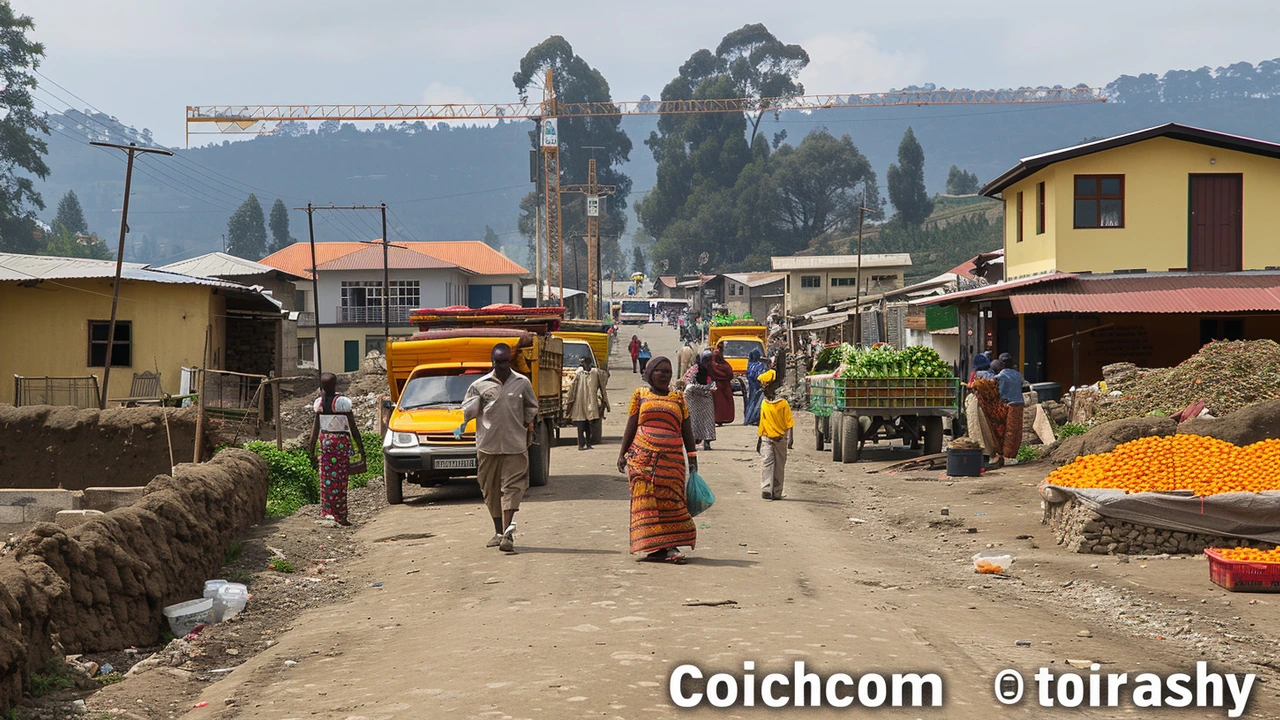
Economic Diversification
One of the vital areas where Ethiopia must focus its efforts is economic diversification. For decades, Ethiopia's economy has been heavily reliant on agriculture, which employs about 70% of the workforce. While agriculture remains a cornerstone of the Ethiopian economy, this dependence makes the country vulnerable to various risks, such as climate change and fluctuating global commodity prices.
Expanding the economy beyond agriculture is not just crucial; it’s necessary. To begin with, Ethiopia has immense potential in the manufacturing sector. Over the past few years, the government has worked tirelessly to improve industrial parks and infrastructure. The Hawassa Industrial Park, for instance, specializes in textile and apparel, attracting significant foreign investment and providing thousands of jobs. Encouragingly, such initiatives have shown that Ethiopia can become a manufacturing hub in the region if similar projects are replicated and scaled up.
Tourism is another promising sector that can add to economic resilience. With its ancient historical sites like Lalibela and Axum, rich culture, and stunning landscapes, Ethiopia has a goldmine of attractions that remain largely underdeveloped. According to the World Bank, tourism contributed only about 5.5% to Ethiopia’s GDP in recent years. By improving infrastructure, marketing, and services, Ethiopia can significantly increase tourist arrivals and revenues. A World Bank report emphasizes,
“Investing in tourism is investing in sustainable development.”This highlights the transformative potential of a well-nurtured tourism industry.
Moreover, Ethiopia is blessed with a wealth of renewable resources that can be harnessed for energy production. The country has made good strides in hydroelectric power, with the Grand Ethiopian Renaissance Dam promising to be a game-changer. Additionally, there are significant untapped potentials in wind and solar energy. By diversifying energy sources, Ethiopia can ensure a reliable and sustainable energy supply that supports economic activities across various sectors.
Not to be overlooked is the importance of technology and innovation in driving economic diversification. The technology sector in Ethiopia is burgeoning, with numerous startups springing up in cities like Addis Ababa. The government's commitment to expanding digital infrastructure is encouraging, as it fosters an environment where tech companies can flourish. For instance, initiatives like Digital Ethiopia 2025 aim to create a robust digital economy by improving internet access, promoting digital literacy, and supporting ICT startups. Enhancing tech capabilities can not only create new jobs but also attract international partnerships and investments, providing a substantial boost to the economy.
The service industry, particularly banking and telecommunications, also offers a fertile ground for growth. The banking sector has been expanding, albeit with some regulatory challenges. Telecommunication services, previously dominated by the state-owned Ethio Telecom, are now seeing new players enter the market, promising improved services and further growth in the sector. With increased competition and better services, these sectors are likely to contribute more significantly to the economy in the coming years.
In transitioning towards a diversified economy, Ethiopia must ensure inclusive growth where all segments of the population benefit from economic development. Policies should be geared towards supporting small and medium-sized enterprises (SMEs) as they are often the backbone of any healthy economy. By providing access to financing, training, and markets, SMEs can thrive, contributing to a more balanced and inclusive economic growth.
International Support and Aid
International support and aid have been essential pillars in Ethiopia’s journey towards development. This support comes in various forms, from financial assistance and humanitarian relief to technical expertise and policy guidance. The international community has recognized Ethiopia’s potential and the need for sustained help to address the country’s multifaceted challenges.
One of the significant areas of international support includes financial aid for development projects. Organizations like the World Bank and the International Monetary Fund (IMF) have provided substantial loans and grants. For instance, in recent years, the World Bank approved a $1.2 billion package to support Ethiopia’s economic reforms. This aid aims to stabilize the macroeconomic environment and promote sustainable growth.
Humanitarian assistance is another critical aspect. Ethiopia has faced recurrent droughts, which have led to food shortages and displaced people. Agencies such as the United Nations World Food Programme (WFP) have been instrumental in providing emergency food aid. In 2023, the WFP delivered over 350,000 metric tons of food to Ethiopia, reaching millions of vulnerable people.
The UN Office for the Coordination of Humanitarian Affairs (OCHA) stated, “The humanitarian situation in Ethiopia remains dire, requiring coordinated international efforts to mitigate the suffering of millions.”
Moreover, international non-governmental organizations (NGOs) play a vital role in health and education sectors. Partnerships with NGOs like Save the Children and Doctors Without Borders have helped improve healthcare services in remote areas and support educational initiatives. These efforts are aimed at achieving long-term sustainable impacts on Ethiopia’s human capital.
Technical expertise and capacity-building initiatives are equally important. Countries like Germany and Japan have offered technical assistance in sectors such as agriculture and industry. This includes training programs, agricultural technology transfer, and industrial skills development, which equip Ethiopians with the knowledge and skills they need to drive their economy forward.
Policy guidance and diplomatic support also make a significant difference. The African Union, headquartered in Addis Ababa, works closely with Ethiopian leaders to offer policy advice and promote regional integration. This collaborative effort aims to ensure that Ethiopia aligns with the best practices and international standards in governance and development.
Additionally, debt relief initiatives have provided a breathing space for Ethiopia’s economy. The Heavily Indebted Poor Countries (HIPC) Initiative, for example, has granted Ethiopia debt relief, enabling the country to allocate more resources towards essential development needs rather than debt servicing.
Overall, the combination of financial aid, humanitarian assistance, technical expertise, policy support, and debt relief shows that international support is multifaceted. It addresses immediate needs while laying the groundwork for long-term sustainable development. The coordinated efforts of multiple stakeholders are crucial for Ethiopia to overcome its challenges and harness its potential for growth and prosperity.
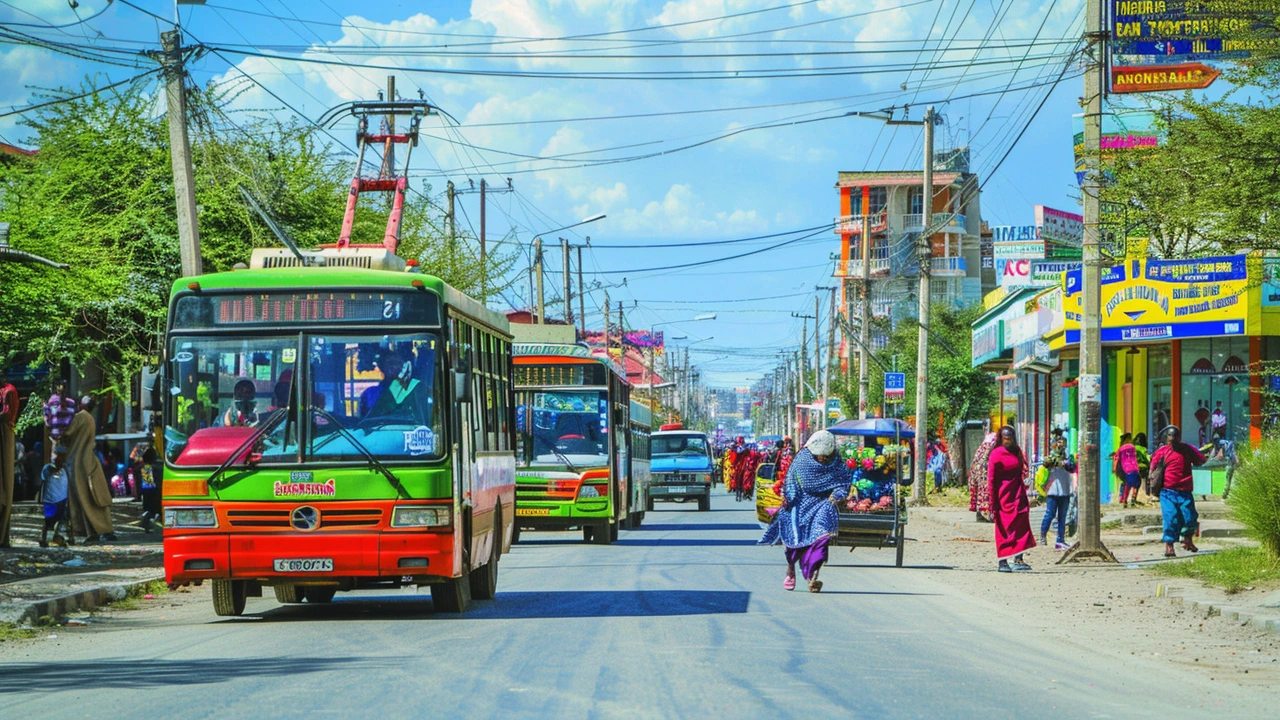
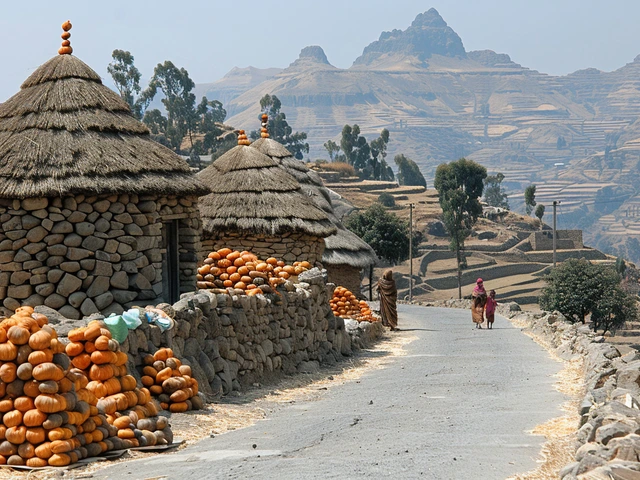 Understanding Poverty in Ethiopia: Facts and Insights
Understanding Poverty in Ethiopia: Facts and Insights
 Starting a Small Business in Ethiopia: Key Steps and Insights
Starting a Small Business in Ethiopia: Key Steps and Insights
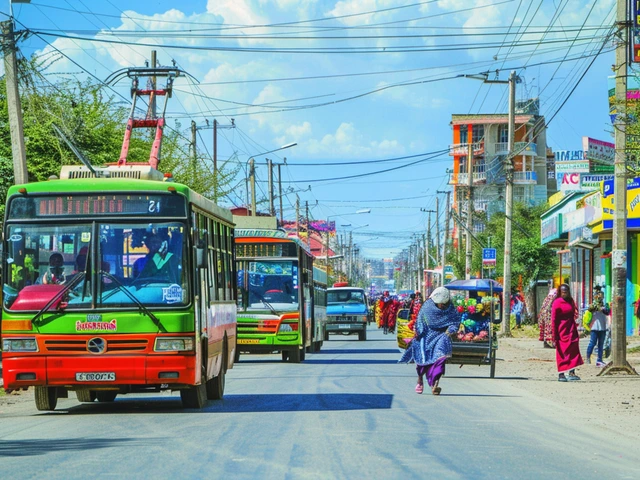 Priorities for Ethiopia's Development: Key Needs and Insights
Priorities for Ethiopia's Development: Key Needs and Insights
 How Much Does a Decent Apartment Cost in Ethiopia?
How Much Does a Decent Apartment Cost in Ethiopia?
 Discovering Ethiopia's Wealthiest Entrepreneur
Discovering Ethiopia's Wealthiest Entrepreneur
MONA RAMIDI
June 17, 2024 AT 18:00I'm sick of reading another endless list of "what needs to be done" while people keep ignoring the raw pain on the ground! Ethiopia's youth are screaming for jobs, and yet policymakers act like they're stuck in a 19th‑century drama. The infrastructure gaps are not just numbers; they're daily tragedies for families trekking miles for water. If the government doesn't wake up now, the whole nation will implode under its own neglect! This is a call to action, not a polite suggestion.
grace riehman
June 17, 2024 AT 19:00Hey fam, love how this post breaks down the real stuff Ethiopia needs. It's so important to highlight both the hustle in Addis and the quiet struggles in the rural spots. We gotta keep sharing info, even if we typo a word here and there – like "definately" instead of definitely, lol. Let's keep the convo inclusive and supportive, because every voice matters in shaping a brighter future!
Vinay Upadhyay
June 17, 2024 AT 20:00Wow, another "comprehensive" overview that reads like a brochure written by someone who never left a classroom. First, the author claims Ethiopia's GDP growth is "about 8–10%" without specifying the source – a vague statement that could easily mislead readers. Second, the phrase "rapid urbanization has left many rural areas lagging behind" is a redundant tautology; lagging behind already implies being left behind. Third, the use of "the country still battles infectious diseases like malaria and tuberculosis" is correct, yet the verb "battles" feels overly dramatic for a public‑health report. Fourth, notice the inconsistent use of the Oxford comma throughout the list of sectors – sometimes it appears, sometimes it doesn't, which is a classic sign of sloppy editing. Fifth, the paragraph about the Grand Ethiopian Renaissance Dam says "aims to alleviate the country's power shortages and support long‑term economic growth" – a statement that would benefit from quantifiable metrics rather than vague optimism. Sixth, the term "young and growing population" appears twice within a few lines, which is unnecessary repetition. Seventh, the author mentions "70% of its population under the age of 30" – technically correct, but the statistic would be stronger with a year reference. Eighth, the sentence "International aid plays a significant role" lacks any citation, leaving the claim unsupported. Ninth, I couldn't help but notice the occasional misuse of "its" versus "it's" – for example, "its a double‑edged sword" should be "it's a double‑edged sword." Tenth, the formatting of headings with HTML tags is inconsistent; some have
while others are plain text. Eleventh, the use of the word "however" appears five times in the same paragraph, which is stylistically repetitive. Twelfth, the article claims that "the World Bank supports several green infrastructure projects" but fails to mention which projects or their impact. Thirteenth, the phrase "the country has made impressive strides" is an overused cliché that adds little substance. Fourteenth, there is a glaring omission of any discussion about Ethiopia's renewable energy potential beyond hydro – solar and wind deserve at least a paragraph. Fifteenth, finally, the concluding sentence tries to sound hopeful, but without concrete action items it reads like empty rhetoric. In short, the piece is packed with data, yet it suffers from a lack of precision, proper sourcing, and editorial polish.
Eve Alice Malik
June 17, 2024 AT 21:00Okay, I get the sarcasm, but the facts you highlighted are still crucial for anyone trying to understand Ethiopia's hurdles. Even if the article repeats some stats, it brings attention to the youth unemployment crisis, which needs immediate policy focus. Meanwhile, the push for renewable energy shouldn't stay a footnote – solar farms in the Somali region are already showing promising yields. And yes, better citations would strengthen the piece, but the overall message about diversifying the economy remains solid.
Debbie Billingsley
June 17, 2024 AT 22:00Ethiopia's future belongs to its proud and resilient people, not to foreign critics.